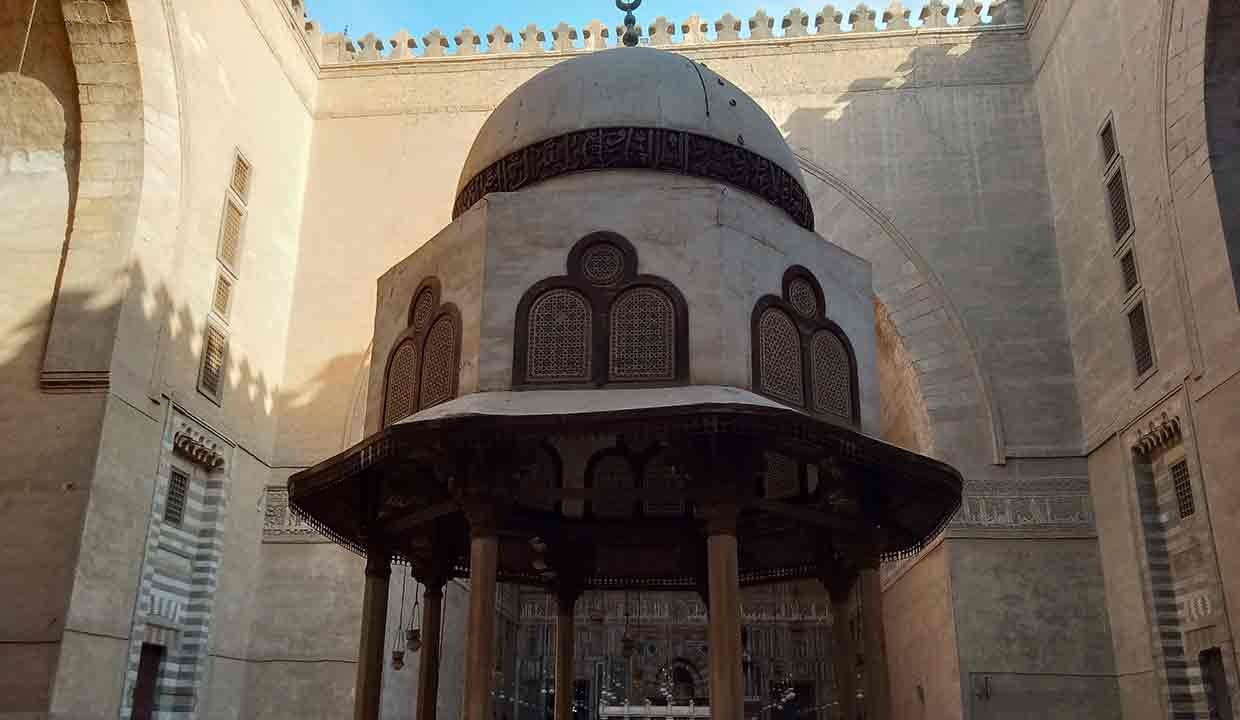Amazing Mosque-Madrasa of Sultan Hasan: Egypt’s History
Explore the enchanting Mosque-Madrasa of Sultan Hasan, a symbol of Cairo’s rich heritage and cultural legacy.
Sultan al-Nasir Hasan (full name: An-Nasir Badr ad-Din Hasan ibn Muhammad ibn Qalawun) took the throne at the age of 13 in 748 AH/1347 CE.When he reached maturity in 1350, he arrested the Emir Manjaq, who was in charge of all state affairs. Prior to that arrest, the emir was only allowed one hundred dirham per day. This pocket change was collected by the Sultan’s servants. It’s especially striking given that at the time, the emir Shaykhu was estimated to earn 200,000 dirham per day. This deprivation could be seen as a catalyst for his later extravagance. When Sultan Hasan took over the reins, he promoted people in his own favor to positions of power.
Discontented Emirs arrested the Sultan in 1351, imprisoned him for three years, and elevated his brother as-Salih Salih to the throne. Hasan studied while in jail, and his obituaries reflected on what he learned as a result. He returned to power and reshuffled the ruling establishment in an attempt to consolidate power, but Sultan Hasan was assassinated by his army commander in chief, Yalbugha al-Umari, a Mamluk who was thought to be loyal. The commander rebelled against the Sultan due to his extravagant spending on women and other forms of favoritism. Ibn Kathir, a contemporary Syrian historian, confirmed this reputation.
In the heart of Cairo’s storied historic district, flanked by the rich tapestry of time, lies a testament to architectural grandeur and cultural legacy—the Mosque-Madrasa of Sultan Hasan. This monumental mosque and madrasa, nestled in the splendid expanse of Salah al-Din Square, bears witness to centuries of history, with its foundations dating back to the Bahri Mamluk period between 1356 and 1363. Commissioned by the visionary Sultan an-Nasir Hasan, this awe-inspiring complex continues to captivate hearts and minds around the world.
The Sultan Hassan Mosque and School are among the largest mosques in Egypt in architecture and the tallest in architecture, The largest mosque in Islam, built in the Islamic Mamluk period (1356-1363) by order of Sultan Hassan, known to the Egyptian world for its crazy and eccentric expenses, among which this Mosque also figures.
A Glimpse into the Past
A Timeless Legacy
The Mosque-Madrasa of Sultan Hasan is more than just a historical site; it’s a living storybook of Egypt’s past. To embark on this journey of discovery, let us delve into the annals of history and explore the intricacies of this magnificent monument.
A Visionary’s Dream
The Architectural Marvel
As we stand before the grandeur of Sultan Hasan’s creation, it’s essential to appreciate the visionary thinking that gave rise to this architectural marvel. Imagine the Cairo of the 14th century, a bustling city alive with the pulse of history. It was in this vibrant city that Sultan Hasan conceived a grand religious complex that would forever change the city’s skyline. His vision gave birth to the Mosque-Madrasa of Sultan Hasan.
A Seven-Year Endeavor
The Epic Construction
History is often measured in milestones, and one such milestone is the seven-year construction of this magnificent complex. In 1356, the Bahri Mamluk period bore witness to the commencement of this ambitious project. For seven years, architects, artisans, and laborers toiled ceaselessly to bring Sultan Hasan’s dream to life. Finally, in 1363, the Mosque-Madrasa of Sultan Hasan proudly stood as a testament to human ingenuity and devotion.
An Architectural Gem
The Grandeur of Design
The architecture of the Mosque-Madrasa of Sultan Hasan reflects the sophistication of Mamluk design, characterized by its intricate details and towering minarets. The complex’s geometric patterns, soaring domes, and ornate calligraphy invoke a sense of reverence and admiration. Each corner of this structure is a work of art, bearing witness to the skills of the craftsmen of that era.
Legacy in Stone
The Historical Significance
Beyond its architectural splendor, the Mosque-Madrasa of Sultan Hasan holds immense historical significance. It served not only as a place of worship but also as a center of education, nurturing generations of scholars and theologians. Its enduring legacy as a hub of knowledge and spirituality continues to inspire visitors from all walks of life.
A Timeless Beauty
Sultan Hasan’s Legacy
Today, the Mosque-Madrasa of Sultan Hasan remains a captivating destination for travelers, historians, and those seeking a glimpse into the past. Its timeless beauty and historical importance are testaments to the enduring power of human creativity and vision.
In conclusion, the Mosque-Madrasa of Sultan Hasan stands as a symbol of Cairo’s rich history and architectural ingenuity. As we explore its intricacies, we are reminded that history is not merely a collection of dates and facts but a living narrative etched in stone and memory. Sultan Hasan’s legacy endures, inviting us to immerse ourselves in the majesty of the past and appreciate the timeless beauty of this monumental mosque and madrasa.

Explore Egypt Tours Tripadvisor

Comment (0)